Category Archives: Data Science
Healthcare Claims Processing AI Use Cases

In recent years, artificial intelligence (AI) / machine learning (ML) has begun to revolutionize many industries – and healthcare is no exception. Hospitals and insurance companies are now using AI to automate various tasks in the healthcare claims processing workflow. Claims processing is a complex and time-consuming task that often requires manual intervention. By using AI to automate claims processing, healthcare organizations can reduce costs, improve accuracy, and speed up the claims adjudication process. In this blog post, we will explore some of the most common use cases for healthcare claims processing AI / machine learning. Automated Data Entry One of the most time-consuming tasks in the claims process is …
Checklist for Training Deep Learning Models
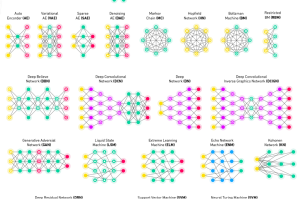
Deep learning is a powerful tool for solving complex problems, but it can be difficult to get started. In this blog post, we’ll provide a checklist of things to keep in mind when training and evaluating the deep learning models and deciding whether they are suitable to deploy in production. By following this checklist, you can ensure that your models are well-trained and ready to tackle real-world tasks. Validation of data distribution The distribution of data can have a significant impact on the performance of deep learning models. When training a model, it is important to ensure that the training data is representative of the distribution of the data that …
List of Machine Learning Topics for Learning

Are you looking for a list of machine learning topics to learn more about? If so, you’ve come to the right place. In this post, we will share a variety of machine learning topics that you can explore to boost your knowledge and skills. So, whether you’re a data scientist or machine learning engineer, there’s something here for everyone. The following represents a list of topics which can be taken up for learning and mastering artificial intelligence / machine learning: Introduction to data science Introduction to machine learning Check out this detailed post on machine learning concepts & examples. Introduction to deep learning Introduction to reinforcement learning Introduction to linear …
What are Features in Machine Learning?
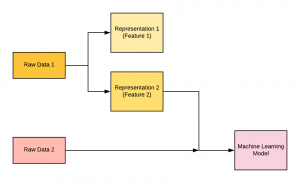
Machine learning is a field of machine intelligence concerned with the design and development of algorithms and models that allow computers to learn without being explicitly programmed. Machine learning has many applications including those related to regression, classification, clustering, natural language processing, audio and video related, computer vision, etc. Machine learning requires training one or more models using different algorithms. Check out this detailed post in relation to learning machine learning concepts – What is Machine Learning? Concepts & Examples. One of the most important aspects of the machine learning model is identifying the features which will help create a great model, the model that performs well on unseen data. …
K-Nearest Neighbors (KNN) Python Examples
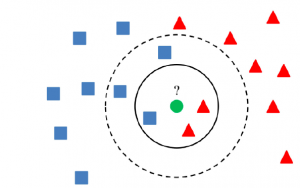
If you’re working with data analytics projects including building machine learning (ML) models, you’ve probably heard of the K-nearest neighbors (KNN) algorithm. But what is it, exactly? And more importantly, how can you use it in your own AI / ML projects? In this post, we’ll take a closer look at the KNN algorithm and walk through a simple Python example. You will learn about the K-nearest neighbors algorithm with Python Sklearn examples. K-nearest neighbors algorithm is used for solving both classification and regression machine learning problems. Stay tuned! Introduction to K-Nearest Neighbors (K-NN) Algorithm K-nearest neighbors is a supervised machine learning algorithm for classification and regression. In both cases, the input consists …
Predicting Customer Churn with Machine Learning

Customer churn, also known as customer attrition, is a major problem for businesses that rely on recurring revenue. Customer churn costs businesses billions of dollars every year, and it’s only getting worse as customers become more and more fickle. In fact, it’s been estimated that the average company loses 10-15% of its customers each year. That number may seem small, but it can have a huge impact on a company’s bottom line. Fortunately, there’s a way to combat churn: by using machine learning to predict which customers are likely to churn. In this blog post, we’ll discuss how customer churn prediction works and why it’s so important. We’ll also provide …
Stacking Classifier Sklearn Python Example

In this blog post, we will be going over a very simple example of how to train a stacking classifier machine learning model in Python using the Sklearn library and learn the concepts of stacking classifier. A stacking classifier is an ensemble learning method that combines multiple classification models to create one “super” model. This can often lead to improved performance, since the combined model can learn from the strengths of each individual model. What are Stacking Classifiers? Stacking is a machine learning ensemble technique that combines multiple models to form a single powerful model. The individual models are trained on different subsets of the data using some type of …
Decision Tree Hyperparameter Tuning Grid Search Example
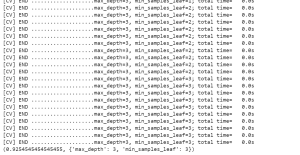
The output prints out grid search across different values of hyperparameters, the model score with best hyperparameters and the most optimal hyperparameters value. In the above code, the decision tree model is train and evaluate our for each value combination and choose the combination that results in the best performance. In this case, “best performance” could be defined as either accuracy or AUC (area under the curve). Once we’ve found the best performing combination of hyperparameters, we can then train our final model using those values and deploy it to production. Conclusion In this blog post, we explored how to use grid search to tune the hyperparameters of a Decision …
Reinforcement Learning Real-world examples
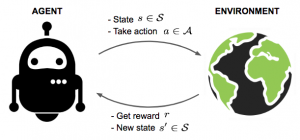
In this blog post, we’ll learn about some real-world / real-life examples of Reinforcement learning, one of the different approaches to machine learning where other approaches are supervised and unsupervised learning. Reinforcement learning is a type of machine learning that enables a computer system to learn how to make choices by being rewarded for its successes. This can be an extremely powerful tool for optimization and decision-making. It’s one of the most popular machine learning methods used today. Before looking into the real-world examples of Reinforcement learning, let’s quickly understand what is reinforcement learning. Introduction to Reinforcement Learning (RL) Reinforcement learning is an approach to machine learning in which the agents …
Passive Aggressive Classifier: Concepts & Examples
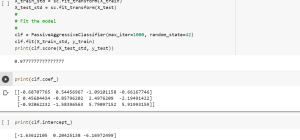
The passive aggressive classifier is a machine learning algorithm that is used for classification tasks. This algorithm is a modification of the standard Perceptron algorithm. The passive aggressive classifier was first proposed in 2006 by Crammer et al. as a way to improve the performance of the Perceptron algorithm on linearly separable data sets. In this blog, we will learn about the basic concepts and principles behind the passive aggressive classifier, as well as some examples of its use in real-world applications. What is the passive aggressive classifier and how does it work? The passive aggressive classifier algorithm falls under the category of online learning algorithms, can handle large datasets, …
Generalized Linear Models Explained with Examples
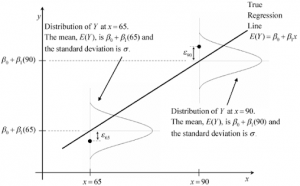
Generalized linear models (GLMs) are a powerful tool for data scientists, providing a flexible way to model data. In this post, you will learn about the concepts of generalized linear models (GLM) with the help of Python examples. It is very important for data scientists to understand the concepts of generalized linear models and how are they different from general linear models such as regression or ANOVA models. What are Generalized Linear Models? Generalized linear models (GLM) are a type of statistical models that can be used to model data that is not normally distributed. It is a flexible general framework that can be used to build many types of regression models, including …
Generate Random Numbers & Normal Distribution Plots
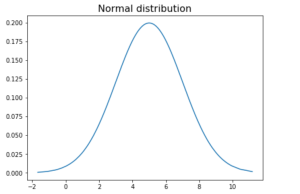
In this blog post, we’ll be discussing how to generate random numbers samples from normal distribution and create normal distribution plots in Python. We’ll go over the different techniques for random number generation from normal distribution available in the Python standard library such as SciPy, Numpy and Matplotlib. We’ll also create normal distribution plots from these numbers generated. Generate random numbers using Numpy random.randn Numpy is a Python library that contains built-in functions for generating random numbers. The numpy.random.randn function generates random numbers from a normal distribution. This function takes size N as in number of numbers to be generated as an input and returns an array of N random …
Pandas: Creating Multiindex Dataframe from Product or Tuples
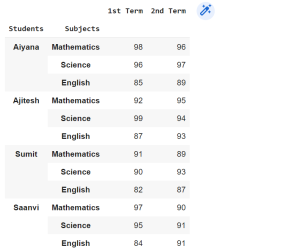
MultiIndex is a powerful tool that enables us to work with higher dimensional data, but it can be tricky to create MultiIndex Dataframes using the from_tuples and from_product function in Pandas. In this blog post, we will be discussing how to create a MultiIndex dataframe using MultiIndex from_tuples and from_product function in Pandas. What is a MultiIndex? MultiIndex is an advanced Pandas function that allows users to create MultiIndexed DataFrames – i.e., dataframes with multiple levels of indexing. MultiIndex can be useful when you have data that can be naturally grouped by more than one category. For example, you might have data on individual employees that can be grouped by …
Top Python Statistical Analysis Packages
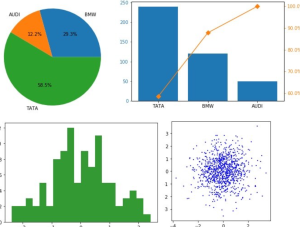
As a data scientist, you know that one of the most important aspects of your job is statistical analysis. After all, without accurate data, it would be impossible to make sound decisions about your company’s direction. Thankfully, there are a number of excellent Python statistical analysis packages available that can make your job much easier. In this blog post, we’ll take a look at some of the most popular ones. SciPy SciPy is a Python-based ecosystem of open-source software for mathematics, science, and engineering. SciPy contains modules for statistics, optimization, linear algebra, integration, interpolation, special functions, Fourier transforms (FFT), signal and image processing, and other tasks common in science and …
Covariance vs. Correlation vs. Variance: Python Examples
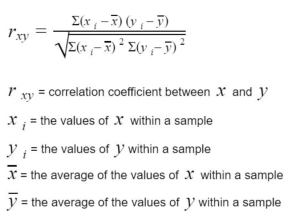
In the field of data science, it’s important to have a strong understanding of statistics and know the difference between related concepts. This is especially true when it comes to the concepts of covariance, correlation, and variance. Whether you’re a data scientist, statistician, or simply someone who wants to better understand the relationships between different variables, it’s important to know the difference between covariance, correlation, and variance. While these concepts may seem similar at first glance, they each have unique applications and serve different purposes. In this blog post, we’ll explore each of these concepts in more detail and provide concrete examples of how to calculate them using Python. What …
Import or Upload Local File to Google Colab
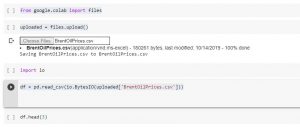
Google Colab is a powerful tool that allows you to run Python code in the cloud. This can be useful for a variety of tasks, including data analysis and machine learning. One of the lesser known features of Google Colab is that you can also import or upload files stored on your local drive. In this article, we will show you how to read a file from your local drive in Google Colab using a quick code sample. There are a few reasons why you as a data scientist might need to learn how to read files from your local drive in Google Colab. One reason is that you may …
I found it very helpful. However the differences are not too understandable for me